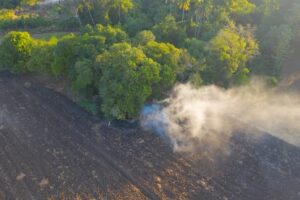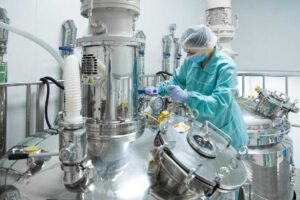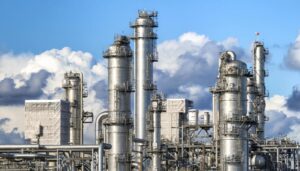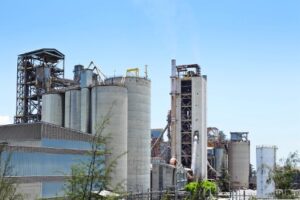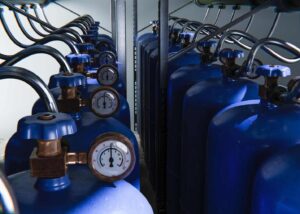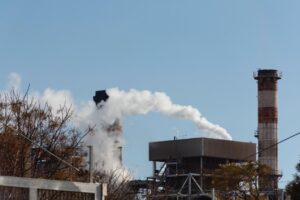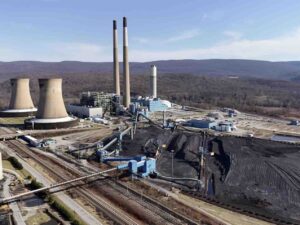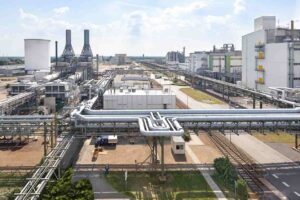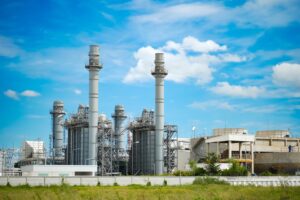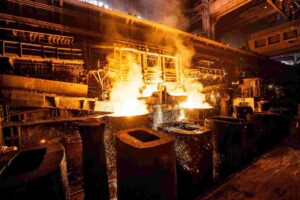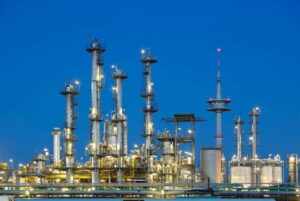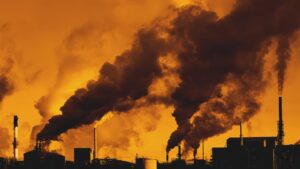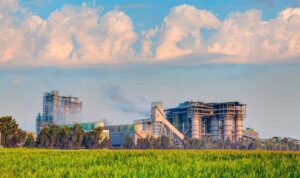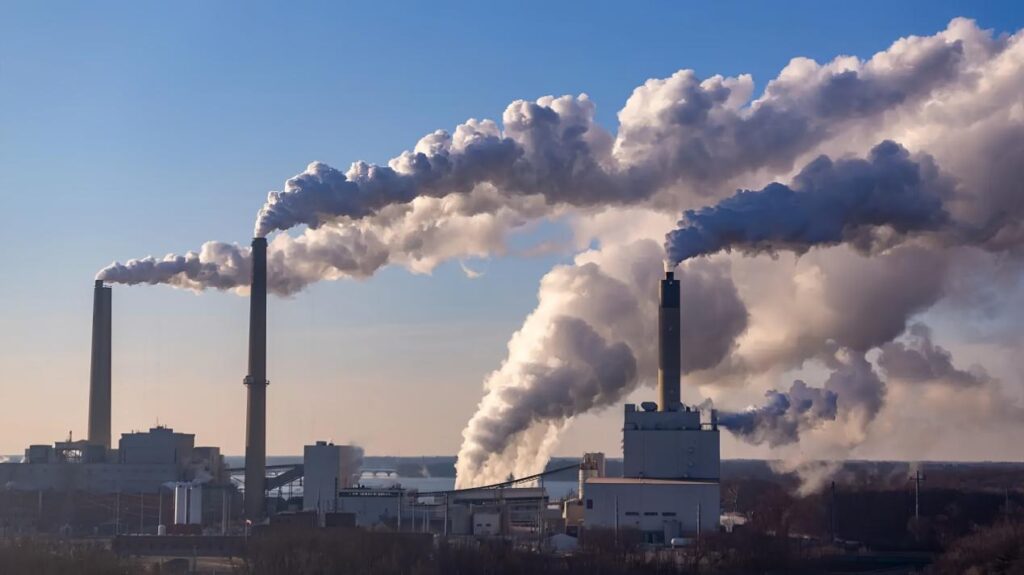
When emission levels of SO₂ and NO fall under 100 ppm, measurement demands rise sharply. Plants in China must not only meet regulatory limits but also ensure data reliability day after day. In these cases, UV-DOAS clearly outperforms NDIR in stability, sensitivity, and long-term fidelity.
First, UV-DOAS (Ultraviolet Differential Optical Absorption Spectroscopy) shows superior detection at low concentrations. By contrast, NDIR (Non-Dispersive Infrared) tends to lose signal clarity below ~100 ppm. Moreover, UV-DOAS systems in China now benefit from mature deployment. On the other hand, NDIR units often require frequent adjustments, compensation, or filtering to maintain acceptable error margins. Finally, when you factor in total cost of ownership, UV-DOAS proves more resilient. For plants aiming for accurate, sub-100 ppm emissions reporting, the risk of relying on NDIR often outweighs its initial savings.
What Does Continuous Emission Monitoring System (CEMS) Mean in the Chinese Context and How Do NDIR and UV-DOAS Differ?
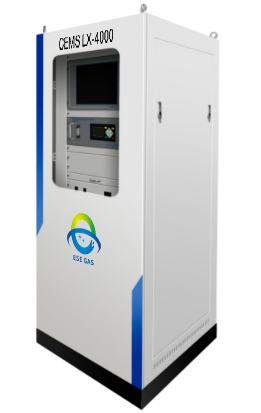
A. What is CEMS in China — Regulatory Requirements and What “Below 100 ppm” Means in Practice
Continuous Emission Monitoring Systems (CEMS) are mandated in China for many large stationary sources. These include coal-fired power plants, cement kilns, and waste-incineration boilers. Regulators require real-time monitoring of SO₂, NOx, and other pollutants. They demand accuracy especially when emissions approach stricter thresholds. “Below 100 ppm” means pollutant concentrations around or under 100 parts per million by volume. For SO₂ and NO, that range is near the limit in many “low-emission” or “ultra-low emission” zones. Plants must ensure readings stay precise, or risk non-compliance fines and environmental penalties. To enforce this, Chinese standards often require verification, frequent calibration, and reliable data logging.
B. Basics of Chinese NDIR Technology: Principle, Strengths, and Typical Use Cases
NDIR uses infrared light beams passed through gas samples. The gas absorbs some IR at specific wavelengths. The device measures how much light gets absorbed. Then it infers gas concentration from that absorption using Beer-Lambert law. NDIR works well for gases with strong IR absorption bands—e.g. CO₂, CH₄, CO. It shows fast response and simpler optics. Many plants use NDIR when pollutant levels are high (hundreds of ppm or more). It serves well in stable environments, with lower humidity, less interference, and less spectral overlap. However, when gas concentrations drop near or below 100 ppm, its signal becomes weak. Interference from water vapor, CO₂, soot or other gases often distort the reading.
C. Basics of Chinese UV-DOAS Technology: Principle, Absorption Cross-Sections, Optical Path, and Multi-Gas Detection Advantages
UV-DOAS measures UV light absorption at multiple specific wavelengths. Each gas (SO₂, NO, NO₂, etc.) has unique UV absorption cross-sections. That means they absorb UV light at very definite patterns. UV-DOAS uses long optical paths and spectral fitting algorithms to distinguish these absorption signatures, even when concentrations are low. For example, SO₂ and NO absorb strongly in UV bands near 190-230 nm or somewhat higher, depending on NO vs NO₂. These strong cross-sections give UV-DOAS higher sensitivity in low-ppm ranges. Moreover, UV-DOAS can monitor multiple gases at once because its spectrum covers several absorbing features. It handles interference better: it can subtract background, correct for scattering, and ignore non-absorbing gases. That makes it well suited for China’s industry with high moisture, temperature swings, dust, and mixed pollutants.
What Criteria Should You Use When Evaluating Continuous Emission Monitoring System (CEMS) for SO₂ & NO Below 100 ppm?
To choose between NDIR and UV-DOAS for sub-100 ppm SO₂ and NO monitoring in China, engineers need clear criteria. Below are six key dimensions. Use these to evaluate technology proposals and equipment specs. Then I’ll show what research tells us about their importance.
1. Detection Limit, Sensitivity & Linearity
- The detection limit is the smallest concentration the system reliably measures. If you can’t detect below ~100 ppm with confidence, you risk non-compliance.
- Sensitivity determines how small changes in gas level your system resolves. UV-DOAS tends to have stronger absorption cross-sections for SO₂ and NO in the UV, so it detects small increments more clearly than NDIR when concentrations are low.
- Linearity ensures that sensor output scales proportionally with concentration. Non-linear response at low ppm means error can blow up. Good UV-DOAS systems maintain linearity across a wider low-ppm span; many NDIR analyzers falter there.
2. Selectivity & Cross-Interference
- Flue gas contains many molecules: water vapor, CO₂, NO₂, soot, VOCs. If your technology misidentifies or misreads due to overlapping absorption, readings suffer.
- UV-DOAS uses spectral fitting with multiple UV absorption bands. That gives it the ability to separate gases even when absorption spectra overlap. NDIR, whose absorption bands often overlap or are broader, needs strong interference correction.
- Research into UV-DOAS systems in China shows they manage interference well even in high moisture and temperature swings. (See EsEgas technical material.)
3. Stability Over Time (Zero / Span Drift)
- When readings shift without change in gas concentration, that is drift. Drift comes from temperature fluctuations, optical alignment, component aging.
- In low-ppm monitoring, drift can be large relative to the measured signal. Thus stability is more critical than in high-ppm settings.
- UV-DOAS designs often include auto-baseline corrections and long optical paths, which reduce drift effects. NDIR systems often need more frequent calibration to compensate.
4. Environmental Robustness and Field Conditions
- Many Chinese plants face harsh environmental conditions: wide daily temperature swings, high humidity, soot and dust, acidic gases. These stress both optics and electronics.
- Optical windows fog, coatings degrade, mirrors misalign, light sources dim. A system that handles this well wins in reliability and consistency.
- UV-DOAS systems with robust window designs, regular purge or cleaning systems, and protective housings tend to maintain performance under these harsh conditions better.
5. Response Time, Dynamic Range & Multi-Gas Capability
- Response time matters if emission events are short. If a pollutant spikes for a few seconds, you want the CEMS to detect it quickly.
- Dynamic range is the gap between minimum and maximum measurable concentration. Monitoring below 100 ppm requires that the minimum end is precise; but the system must also handle occasional higher spikes without saturation.
- Multi-gas capability (measuring SO₂, NO, NO₂, etc.) helps reduce cost and complexity. UV-DOAS inherently supports multi-gas measurement; NDIR may require separate sensors or filters for different gases.
6. Total Cost of Ownership, Regulatory Compliance & Operational Practicality
- Upfront cost is only part of the picture. Consider calibration costs, maintenance, spare parts, downtime, and operator training.
- Regulatory standards in China require documented traceability, frequent audits, and often cross-validation of emission data. A system that simplifies compliance saves money in penalties or re-tests.
- Operational practicality includes how easy the equipment is to clean, calibrate, install, and maintain. Even a technically precise analyzer becomes useless if it’s too fragile, too hard to support in remote or harsh locations.
How Do NDIR and UV-DOAS in China Compare for Strengths & Weaknesses in Sub-100 ppm SO₂/NO Monitoring?
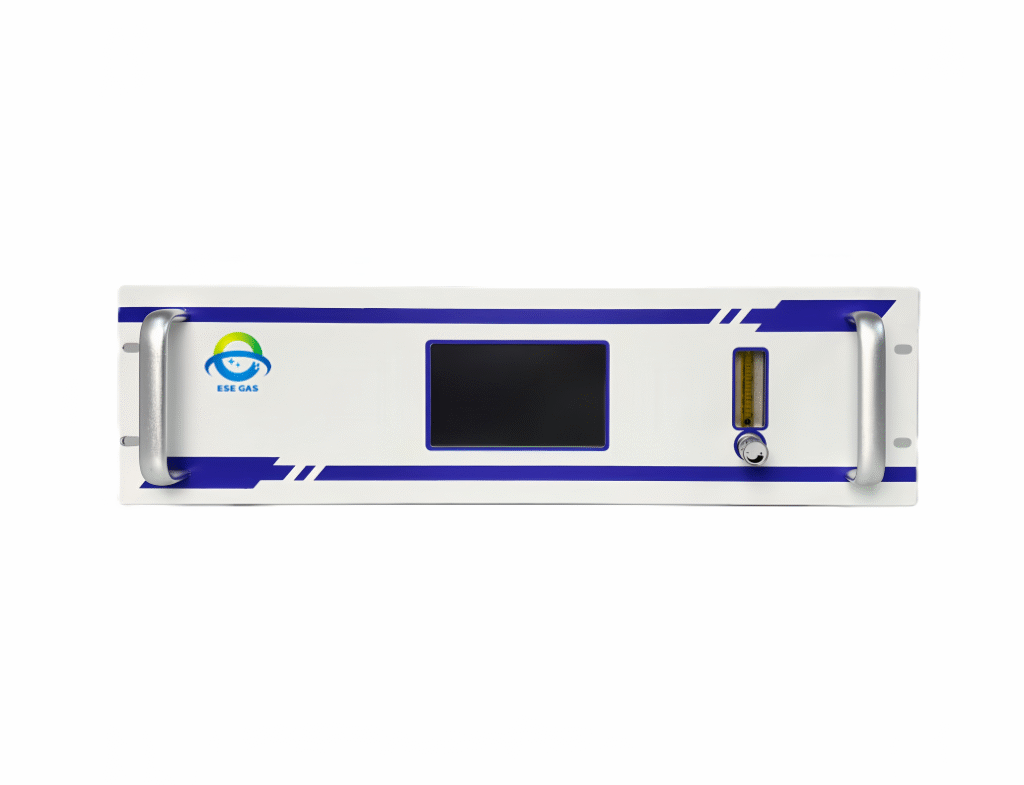
(ESEGAS NDIR-based gas analyzer)
Strengths of Chinese NDIR:
- Simplicity and Low Initial Complexity
- NDIR uses fewer optical components. This means easier manufacture and simpler calibration.
- It generally requires less advanced spectral processing compared to UV-DOAS.
- Cost-Effectiveness in Certain Use Cases
- When monitoring high pollutant concentrations (>100 ppm), NDIR gives acceptable accuracy at lower cost.
- It often has lower purchase price and simpler maintenance in stable environments.
- Fast Response for Dominant Gases
- For abundant species like CO₂ or CH₄, IR absorption is strong, giving quick readings.
- In these cases, NDIR’s time to reach 90 % of final reading (T90) can be short.
Weaknesses of Chinese NDIR:
- Weak Signal at Low Concentrations
- Below ~100 ppm, IR absorption by SO₂/NO is weak. Signal-to-noise degrades.
- Minor fluctuations (temperature, optical misalignment) overshadow real gas absorption.
- Interference and Spectral Overlap
- CO₂, water vapor, soot, and other gases absorb IR and overlap target gas bands.
- NDIR often needs filters or compensation, which can introduce error or drift.
- Baseline and Zero/Span Drift
- IR sources degrade; detectors and filters age. Baseline shifts cause zero or span readings to drift.
- Without frequent calibration, drift can become large relative to low ppm signals.
- Environmental Stress Sensitivity
- High humidity, particulate matter, temperature swings and corrosion affect IR optics.
- Optical windows can fog or soot deposit, reducing throughput of IR light.
- Limited Multi-Gas & Regulatory Flexibility
- NDIR often measures one or a few gases at separate IR bands. For NO₂, conversion or extra sensors may be needed.
- Regulatory monitoring tending toward multi-pollutant readings demands more versatile systems.
What Advantages Does UV-DOAS Offer for Chinese Continuous Emission Monitoring System Monitoring Below 100 ppm?
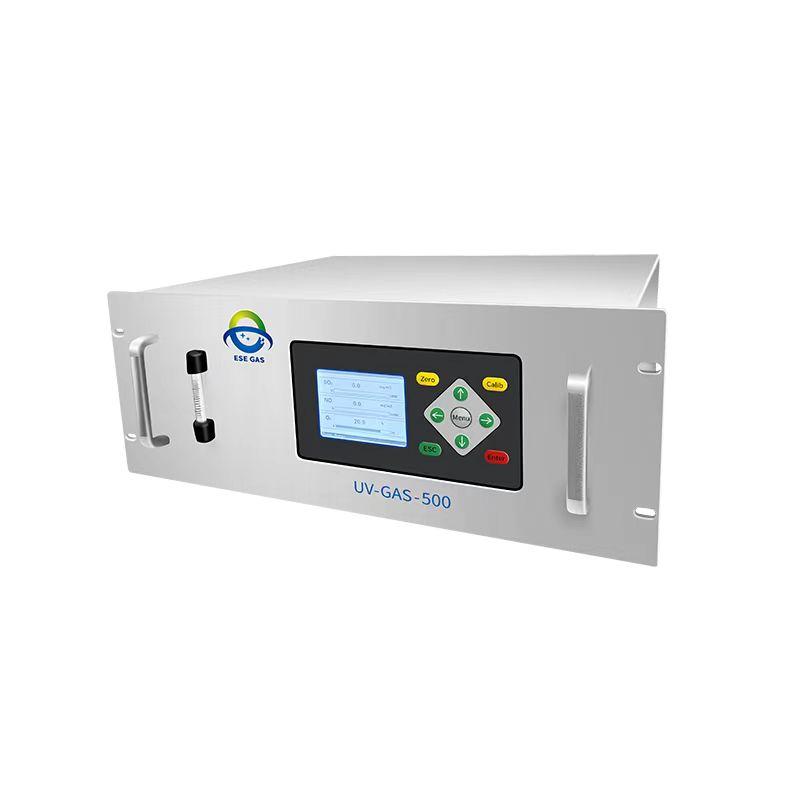
(ESEGAS UV-DOAS-based gas analyzer)
Advantageous Features:
- High Sensitivity and Low Detection Limit
- UV-DOAS leverages strong UV absorption cross-sections of SO₂ and NO. This yields measurable change even at single or low two-digit ppm ranges.
- ESEGAS’s UV-GAS-500—when set for “Low Emission” or “Ultra-Low Emission” ranges—shows SO₂/NO detection down to 50 ppm or less, with repeatability ≤±0.5 % Full Scale, and drift ≤±2 % FS over 7 days.
- Also research “Detection of ultra-low concentration NH₃, SO₂, and NO using UV-DOAS combined with multidimensional spectral fusion” demonstrates detection limits of ~6 ppb/ppm for SO₂ and ~2.5 ppb/ppm for NO in mixtures.
- Strong Selectivity & Ability to Resolve Overlapped Spectra
- UV-DOAS works with multiple absorbing bands in UV. It allows for spectral fitting, baseline correction, and algorithms like FFT to disentangle overlapping spectra.
- Better Stability and Drift Behavior
- Because UV-DOAS uses differential absorption, many background and baseline effects cancel out.
- ESEGAS’s UV-GAS-500 specs list zero and span drift at ≤±2 % FS over 7 days under low emission ranges. That suggests strong stability for sub-100 ppm applications.
- Field Hardened & Environmental Resilience
- UV-GAS-500 includes long optical path L-cells, robust window filtering, protection from fumes, dust and moisture.
- Research and industrial use in China show UV-DOAS systems tolerate strong interference from moisture and temperature swings better than NDIR in many cases. Systems incorporating fusion algorithms or UV band filtering reduce noise and drift under harsh conditions.
- Multi-Gas Capability & Regulatory Compatibility
- UV-DOAS units like UV-GAS-500 measure multiple pollutant gases: SO₂, NO, NO₂ simultaneously without needing a NO→NO₂ converter. That simplifies hardware and boosts regulatory trust.
- These units support multiple emission ranges: “Standard”, “Low Emission”, “Ultra-Low Emission”. That matches evolving Chinese emission limits.
Conclusion
In summary, when you monitor SO₂ and NO below the 100 ppm threshold in Chinese CEMS applications, UV-DOAS from China offers the more reliable, accurate, and sustainable choice.
As concentrations drop and regulations tighten, NDIR’s limitations—baseline drift, cross-sensitivity, and lower signal-to-noise—become more exposed.
Thus, plant engineers and specifiers should look beyond upfront price tags. Consider:
- Total long-term cost (maintenance, calibration, spare parts, downtime)
- Regulatory risk (noncompliance penalties, audit failures, data gaps)
- Operational resilience (performance under humidity, temperature swings, dust)
For many plants now required to meet ultra-low emission or stringent compliance standards, investing in a mature UV-DOAS-based system (such as ESEGAS’s UV-GAS-500 within their LX-4000 CEMS platform) delivers value not just through accuracy, but through lower risk, fewer disruptions, and more credible emissions reporting. If you want to get a tailored solution base on your needs, contact with us please!
In the end, the right choice aligns with your plant’s emission levels, environmental conditions, regulatory obligations, and long-term operational goals. If your goal includes monitoring SO₂ and NO below 100 ppm reliably, UV-DOAS from China is the technology that gives you both confidence and compliance.
FAQs: UV-DOAS vs NDIR in Chinese CEMS Monitoring SO₂ & NO Below 100 ppm
Q1: What recent Chinese policy changes make monitoring SO₂ and NO below 100 ppm more critical?
China has tightened emission standards across power, industrial, and cement sectors, especially under its “Ultra-Low Emission” (ULE) policies. Authorities now demand stricter compliance, smaller emission charge standards, and stronger penalties for SO₂ and NOx emissions. These policy shifts increase the pressure on CEMS tech to deliver accurate measurements even at low concentrations. Studies show China’s SO₂ emissions have already dropped more than 50-60 % over recent years due to these regulations.
Q2: Why can’t NDIR reliably monitor SO₂ and NO below 100 ppm in Chinese CEMS, while some foreign NDIR systems claim to achieve that?
NDIR’s performance drops sharply below ~100 ppm because IR absorption by SO₂ and NO is weak, and interference (water vapor, CO₂, soot) is stronger in many Chinese flue gases. Foreign operations with very clean gas streams, stable environments, and rigorous maintenance sometimes succeed with NDIR at low ppm. But in many Chinese field conditions (temperature swings, high humidity, dust, mixed gas species), NDIR often becomes unstable, drifting, or giving false readings. Thus, while other countries’ NDIR cases exist, their conditions are not typical in many Chinese NDIR-based instruments manufactures.
Q3: Is UV-DOAS technology in China among world leading systems when used for low-ppm SO₂ & NO monitoring?
Yes. Recent Chinese research and industrial practice put UV-DOAS at or near global top tier in this field. For example, a study used UV-DOAS combined with spectral fusion and achieved ultra-low detection limits (few ppb-meter level) for SO₂ and NO even in mixed flue gas environments. Also China’s policy demand and large scale deployment drive maturity: optical components, spectral fitting, calibration routines get refined faster in China now than many other places. UV-DOAS modules by companies like ESEGAS thus benefit from both local scale R&D and field feedback.
Q4: What are main scientific studies or field results supporting UV-DOAS’s stronger performance vs NDIR under low ppm conditions?
Some key findings include:
- A Chinese study showed simultaneous measurement of SO₂ and NO₂ using long-path optimized DOAS with average deviation <1.5 % and max <4.5 % in tests including several hundred ppm ranges.
- Another experiment combined UV-DOAS with multidimensional spectral fusion and detected ultra-low concentration NH₃, SO₂, NO with high precision.
- Survey data show China’s NOₓ and SO₂ emissions per fossil fuel unit have been declining significantly, illustrating both policy enforcement and need for accurate low-ppm monitoring.
These studies underline UV-DOAS’s superior sensitivity, lower drift, and better interference handling under real-world conditions.
Q5: What trade-offs should plant engineers consider when choosing UV-DOAS over NDIR in Chinese CEMS for low-ppm SO₂ & NO?
Key trade-offs include:
- Upfront cost & complexity: UV-DOAS systems tend to cost more initially because of complex optics, UV light sources, and spectral data processing.
- Calibration and maintenance demands: While UV-DOAS can deliver more stable readings, it often requires more care for lamp life, optical windows, and alignment.
- Operational support & spare parts: Local vendor support (e.g. ESEGAS) matters; parts and service availability can make or break performance in remote or harsh sites.
However, when you account for regulatory risk (non-compliance, fines), drift stability, and life cycle maintenance, UV-DOAS often yields lower total cost over time for low-ppm monitoring.
Q6: Could future regulation in China require even lower detection limits? How does that favor UV-DOAS vs NDIR?
Yes. China is pushing for stricter air quality goals, updating standards for ambient and emission SO₂/NOx levels, and increasing fines and liabilities. Other policy measures, like more frequent audits and tighter emissions charges, raise the demand for accurate low-ppm data. UV-DOAS systems, with strong absorption cross-sections, multi-gas capability, and greater sensitivity, are better placed to meet those future standards. NDIR might only stay viable in simpler or higher-pollutant environments, or where cost constraints dominate.




